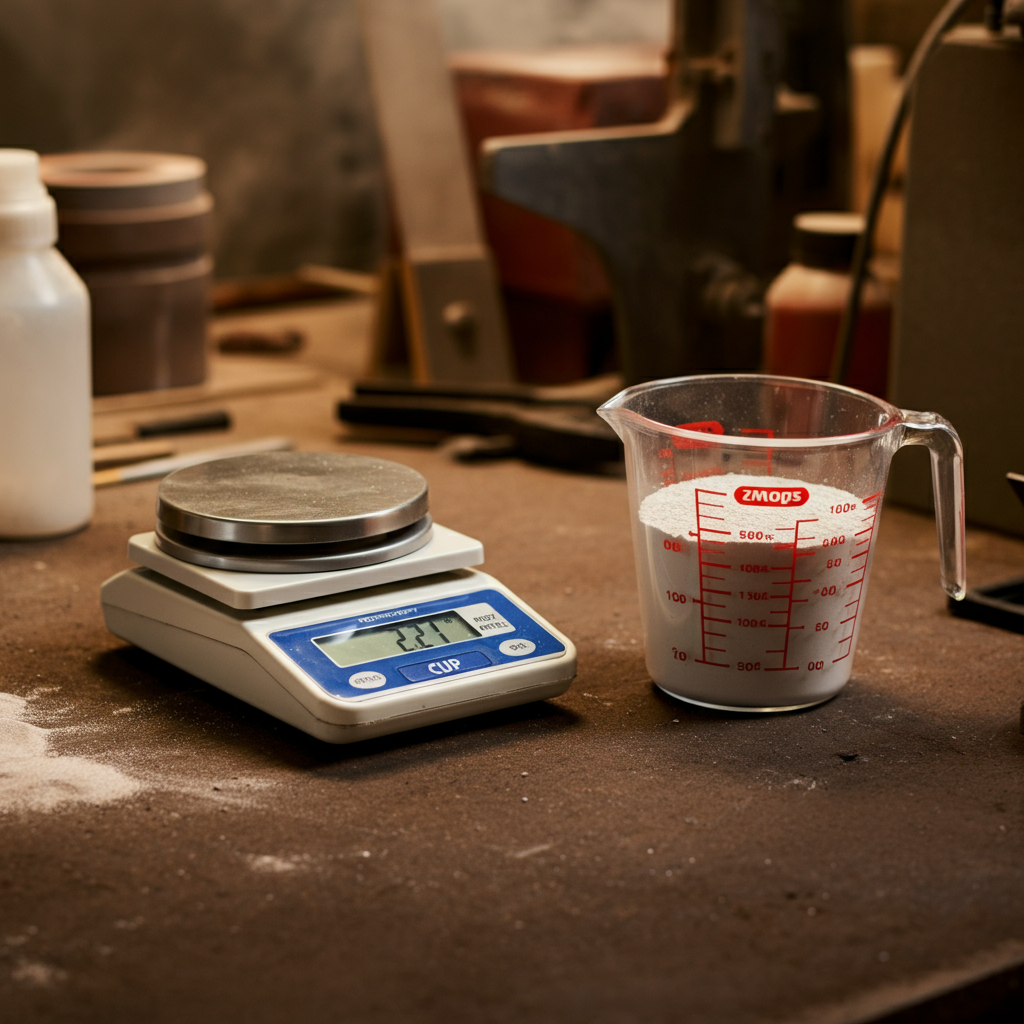Refractory cement is a critical material for high-heat construction projects such as building furnaces, kilns, and fireplaces. But for both professionals and DIY enthusiasts, measuring this dense material accurately can be trickier than expected—especially when trying to convert its weight (pounds) into volume (cups). This often raises questions like, “How many cups are in 2.2 pounds of refractory cement?”
Whether you’re tackling a DIY home project or managing a large-scale build, understanding these calculations can save you time, effort, and wasted materials. Let’s break this down step-by-step so you can measure your refractory cement with confidence.
What Is Refractory Cement, and Why Does It Matter?
Refractory cement is a special blend of compounds designed to withstand extremely high temperatures. It is most commonly used in applications that require heat insulation or resistance to thermal shock, such as the linings of furnaces, pizza ovens, fireplaces, and industrial kilns. Unlike traditional cement, refractory cement is able to maintain its structural integrity and strength even when exposed to temperatures beyond 2,000°F (1,093°C).
The correct ratio of cement to other ingredients (like aggregates) is vital for ensuring the longevity and safety of your structure. That’s why properly measuring refractory cement is so important—it directly impacts the performance of your project.
Why Convert Pounds to Cups for Refractory Cement?
When buying refractory cement, you’ll often find it sold by weight (e.g., 25-pound bags) instead of volume. However, many construction recipes, guides, and resources refer to volume measurements like cups or quarts, especially for DIY projects. This can leave users scratching their heads about how to translate pounds into cups effectively.
Understanding this conversion is crucial because:
- Accuracy Matters: Too much or too little cement can compromise the strength and durability of the finished product.
- Efficient Preparation: Knowing the exact amounts saves you from having to redo measurements or waste materials.
- Recipe-Based Projects: Many DIY instructions use cups, especially in small-scale refractory cement recipes, making it essential to convert correctly.
Now, let’s tackle how many cups you get from 2.2 pounds of refractory cement.
The Weight-To-Volume Conversion Factor
To determine how many cups of refractory cement are equivalent to 2.2 pounds, you first need to understand its weight-to-volume conversion factor. Refractory cement, like most powdered materials, has a specific density or weight per unit of volume.
On average, refractory cement weighs 3 pounds per quart. Since there are 4 cups in a quart, you can calculate the weight of 1 cup as follows:
1 quart = 4 cups
3 pounds ÷ 4 cups = 0.75 pounds per cup
This means one cup of refractory cement weighs 0.75 pounds (12 ounces).
Calculating Cups Per Pound for Refractory Cement
Now that we know each cup weighs 0.75 pounds, we can calculate how many cups are in 2.2 pounds:
2.2 pounds ÷ 0.75 pounds per cup = approximately 2.93 cups
Therefore, 2.2 pounds of refractory cement is roughly 2.93 cups—or just shy of 3 cups.
A Quick Volume Reference Chart for Refractory Cement
Here’s a handy chart to help you convert pounds of refractory cement into cups:
| Weight (lbs) | Volume (cups) |
|---|---|
| 1 pound | 1.33 cups |
| 2 pounds | 2.67 cups |
| 2.2 pounds | 2.93 cups |
| 3 pounds | 4 cups |
| 5 pounds | 6.67 cups |
This chart offers a baseline for quickly calculating measurements without having to crunch the numbers manually.
Measuring Challenges You Might Face and How to Overcome Them
Despite the math, the process of measuring refractory cement isn’t always smooth. Here are some common challenges and tips to address them:
1. Compacted Weight Variation
Refractory cement can compact or settle, causing discrepancies in weight-to-volume ratios. Always fluff the cement before measuring to ensure consistency.
2. Non-Uniform Packaging
Some packaging may contain clumps or denser areas of cement. Break these clumps apart to avoid skewing your measurements.
3. Environmental Factors
Humidity can make refractory cement heavier by absorption. If your material has been stored in a humid environment, the weight per cup may be higher than estimated. Aim to store it in a dry location.
4. Small-Batch Adjustments
For smaller batches, consider using a kitchen scale for higher precision in your measurements. This will help deliver the exact amount needed for your project.
FAQs About Refractory Cement Measurements
1. Can I Use a General Weight-to-Volume Conversion for Cement?
No, each type of cement has its own density. Refractory cement is denser than standard Portland cement, so the conversion factors will differ.
2. Is It Better to Use Weight or Volume When Measuring Refractory Cement?
Weight is generally more accurate, especially for larger builds, as it avoids inconsistencies caused by compaction or settling. However, for small DIY projects, converting to cups is perfectly acceptable if you follow the correct conversions.
3. What Tools Should I Use to Measure Refractory Cement?
- For weights, use a digital kitchen or industrial scale.
- For volume, use measuring cups designed for dry ingredients, not liquids.
4. Does the Ratio Change for Wet Refractory Cement?
Yes, wet refractory cement weighs more due to added water content. The density and weight-to-volume ratio will differ, so always refer to guides specific to wet mixes.
5. Are There Alternatives to Using Cups for Small-Scale Projects?
You can use quarts or even grams as an alternative—just make sure to adjust the conversion factor accordingly (1 quart = 4 cups, or 1 pound = approximately 453.6 grams).
Master Your Mix Without Guesswork
Accurate measurements are the foundation of a successful project, especially when working with specialized materials like refractory cement. By understanding the proper conversion between pounds and cups, such as 2.2 pounds equating to approximately 2.93 cups, you can ensure your projects are both safe and durable.

